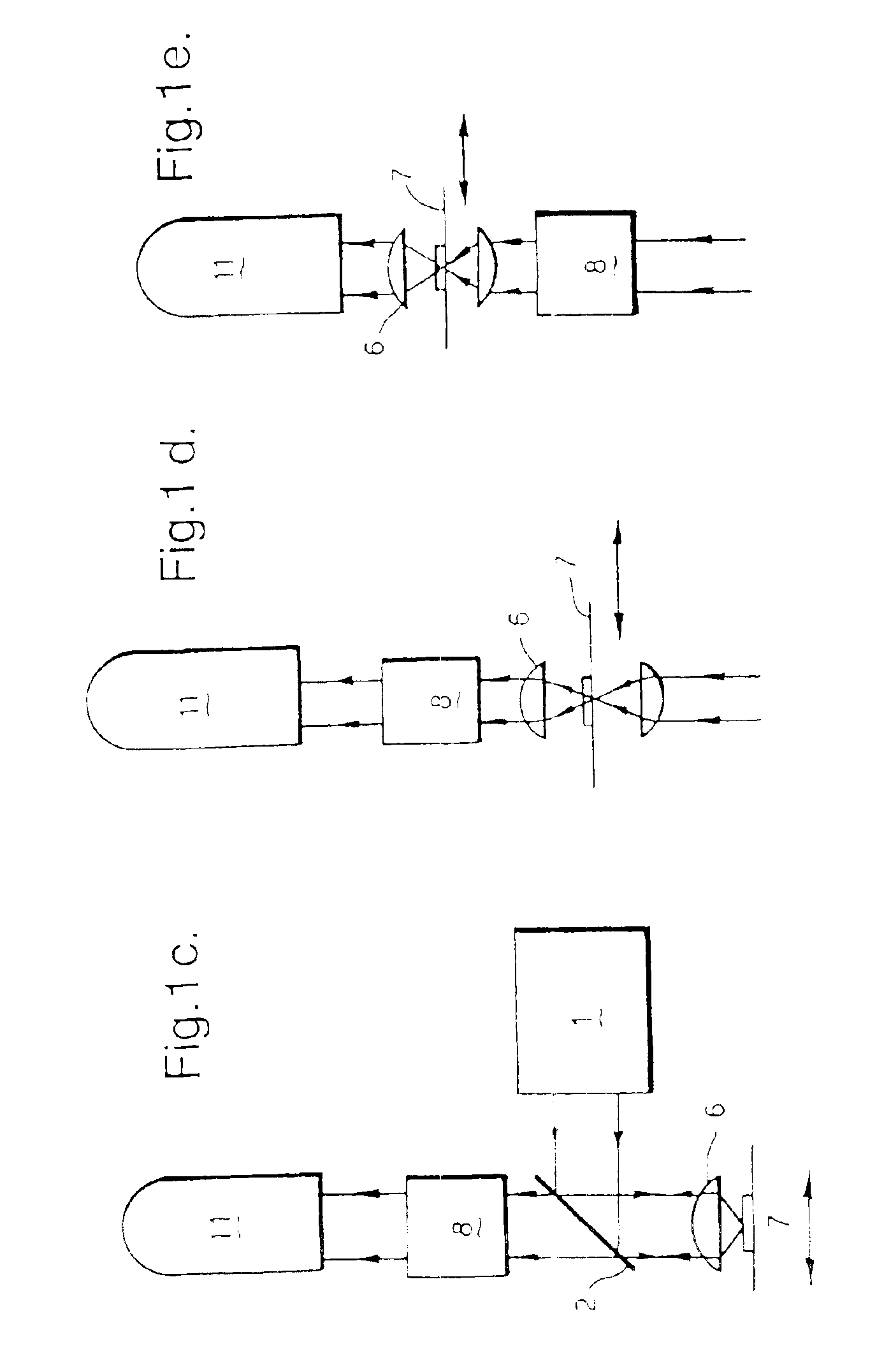Apparatus and methods for fourier spectral analysis in a scanning spot microscope
a scanning spot microscope and spectral analysis technology, applied in the field of scanning spot microscopes, can solve the problems of loss of light in filters or monochromators, serious problems, and sacrifice of at least half of the intensity of incident light, and achieve the effect of reducing the operating range of wavelength, and reducing the cost of operation
- Summary
- Abstract
- Description
- Claims
- Application Information
AI Technical Summary
Benefits of technology
Problems solved by technology
Method used
Image
Examples
Embodiment Construction
Further features and advantages of the invention will be apparent from the following description of embodiments, making reference to the accompanying drawings, in which:
FIGS. 1a, 1b, 1c, 1d and 1e show schematically examples of scanning spot microscopes and various ways in which an interferometer may be incorporated into them. For simplicity, single detectors are shown in diagrams, although in the microscopes at FIGS. 1a-1d a pair of detectors may be used.
FIG. 2 shows an interferometer suitable for relatively high intensities of light (e.g. for measurements of absorption spectra of stained microscope specimens).
FIG. 3 shows an interferometer similar to that of FIG. 2 in which a polarizing beamsplitter is substituted for the analyzer.
FIG. 4 shows a more preferred polarizing interferometer suitable for lower intensities of light.
In FIG. 1a an epi-fluorescence or epi-reflection microscope is shown, in the form frequently used for confocal microscopy. Light from a laser 1 is reflected o...
PUM
 Login to View More
Login to View More Abstract
Description
Claims
Application Information
 Login to View More
Login to View More - R&D
- Intellectual Property
- Life Sciences
- Materials
- Tech Scout
- Unparalleled Data Quality
- Higher Quality Content
- 60% Fewer Hallucinations
Browse by: Latest US Patents, China's latest patents, Technical Efficacy Thesaurus, Application Domain, Technology Topic, Popular Technical Reports.
© 2025 PatSnap. All rights reserved.Legal|Privacy policy|Modern Slavery Act Transparency Statement|Sitemap|About US| Contact US: help@patsnap.com



